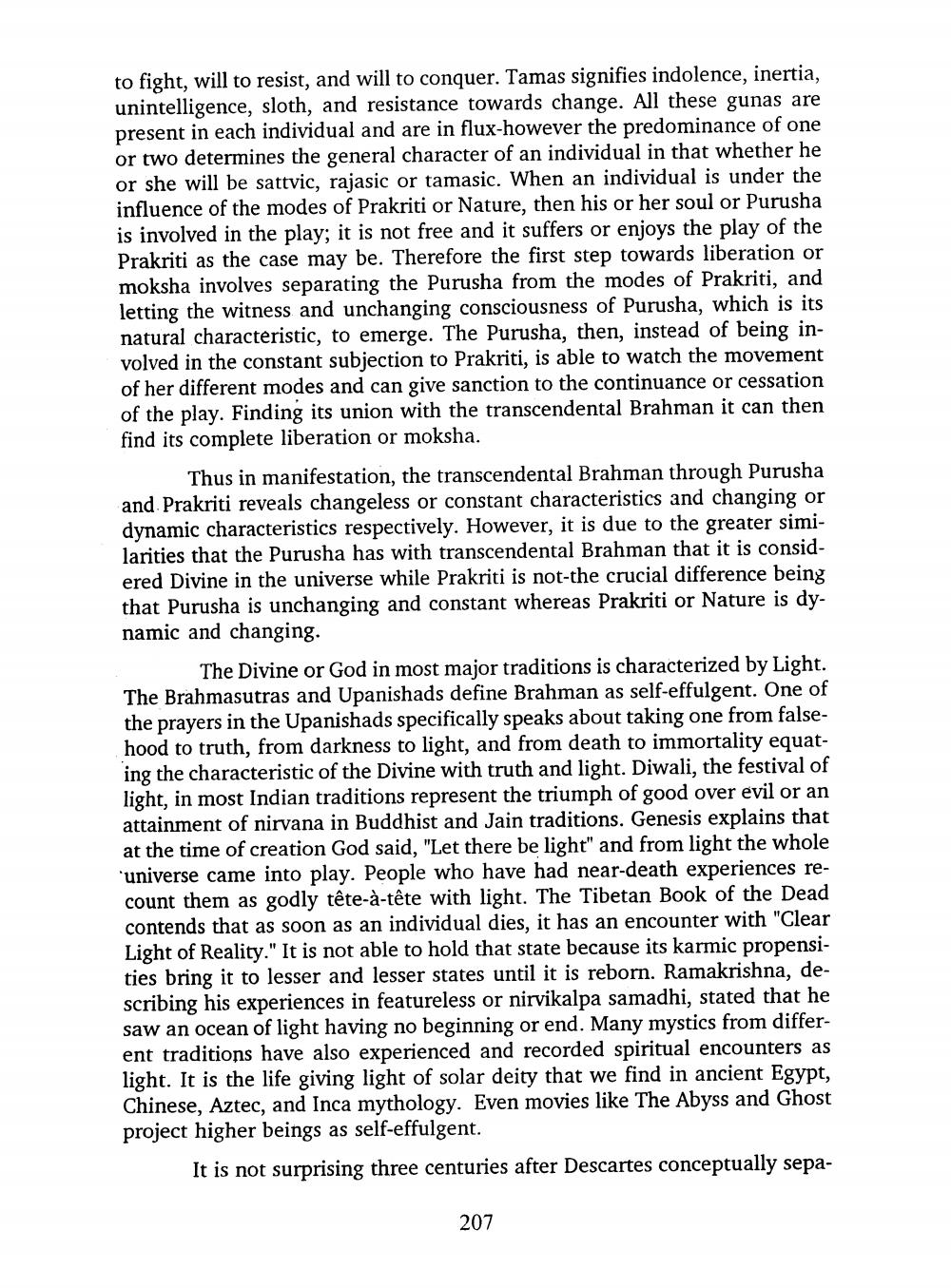________________
to fight, will to resist, and will to conquer. Tamas signifies indolence, inertia, unintelligence, sloth, and resistance towards change. All these gunas are present in each individual and are in flux-however the predominance of one or two determines the general character of an individual in that whether he or she will be sattvic, rajasic or tamasic. When an individual is under the influence of the modes of Prakriti or Nature, then his or her soul or Purusha is involved in the play; it is not free and it suffers or enjoys the play of the Prakriti as the case may be. Therefore the first step towards liberation or moksha involves separating the Purusha from the modes of Prakriti, and letting the witness and unchanging consciousness of Purusha, which is its natural characteristic, to emerge. The Purusha, then, instead of being involved in the constant subjection to Prakriti, is able to watch the movement of her different modes and can give sanction to the continuance or cessation of the play. Finding its union with the transcendental Brahman it can then. find its complete liberation or moksha.
Thus in manifestation, the transcendental Brahman through Purusha and Prakriti reveals changeless or constant characteristics and changing or dynamic characteristics respectively. However, it is due to the greater similarities that the Purusha has with transcendental Brahman that it is considered Divine in the universe while Prakriti is not-the crucial difference being that Purusha is unchanging and constant whereas Prakriti or Nature is dynamic and changing.
The Divine or God in most major traditions is characterized by Light. The Brahmasutras and Upanishads define Brahman as self-effulgent. One of the prayers in the Upanishads specifically speaks about taking one from falsehood to truth, from darkness to light, and from death to immortality equat ing the characteristic of the Divine with truth and light. Diwali, the festival of light, in most Indian traditions represent the triumph of good over evil or an attainment of nirvana in Buddhist and Jain traditions. Genesis explains that at the time of creation God said, "Let there be light" and from light the whole 'universe came into play. People who have had near-death experiences recount them as godly tête-à-tête with light. The Tibetan Book of the Dead contends that as soon as an individual dies, it has an encounter with "Clear Light of Reality." It is not able to hold that state because its karmic propensities bring it to lesser and lesser states until it is reborn. Ramakrishna, describing his experiences in featureless or nirvikalpa samadhi, stated that he saw an ocean of light having no beginning or end. Many mystics from different traditions have also experienced and recorded spiritual encounters as light. It is the life giving light of solar deity that we find in ancient Egypt, Chinese, Aztec, and Inca mythology. Even movies like The Abyss and Ghost project higher beings as self-effulgent.
It is not surprising three centuries after Descartes conceptually sepa
207




